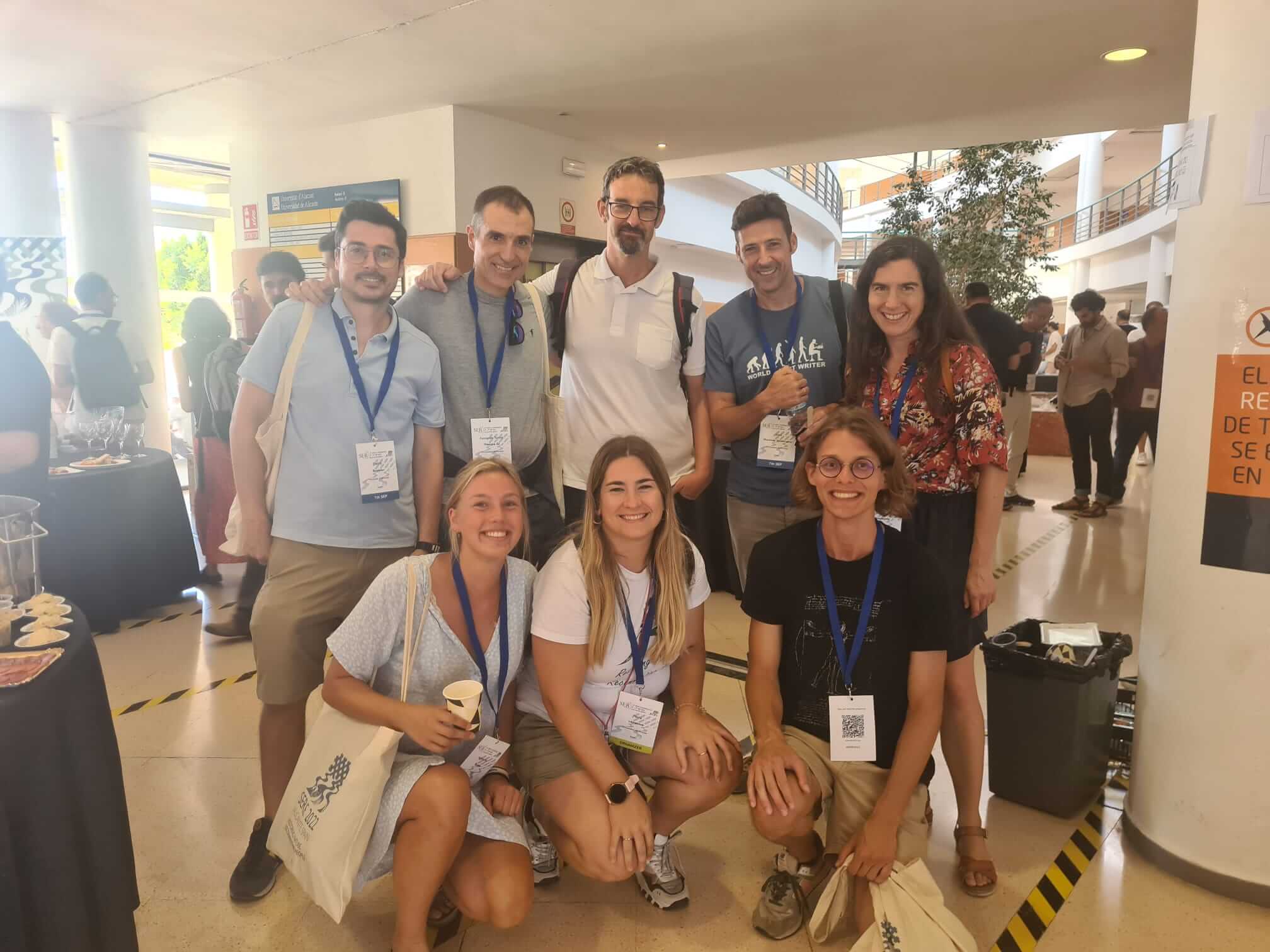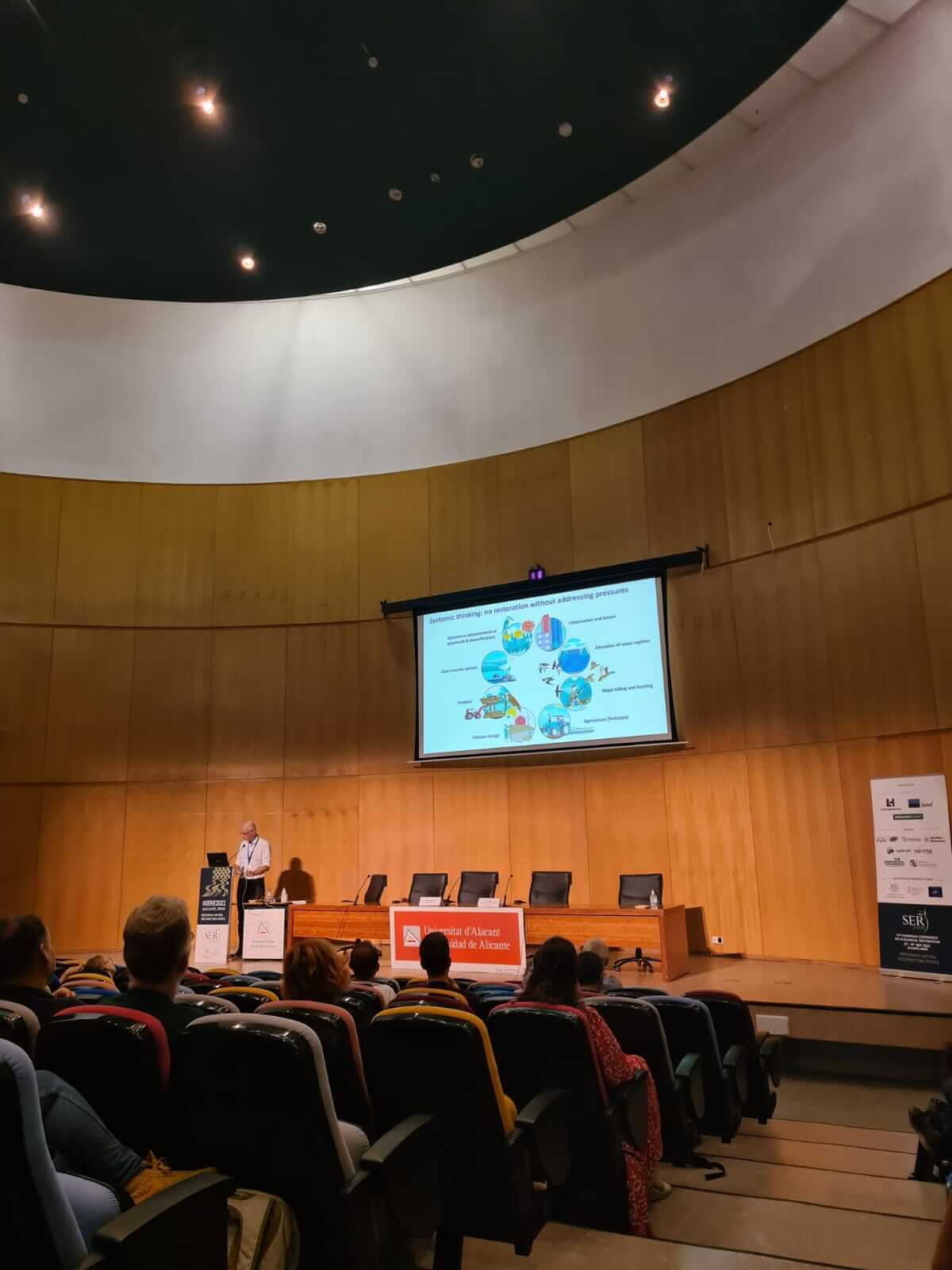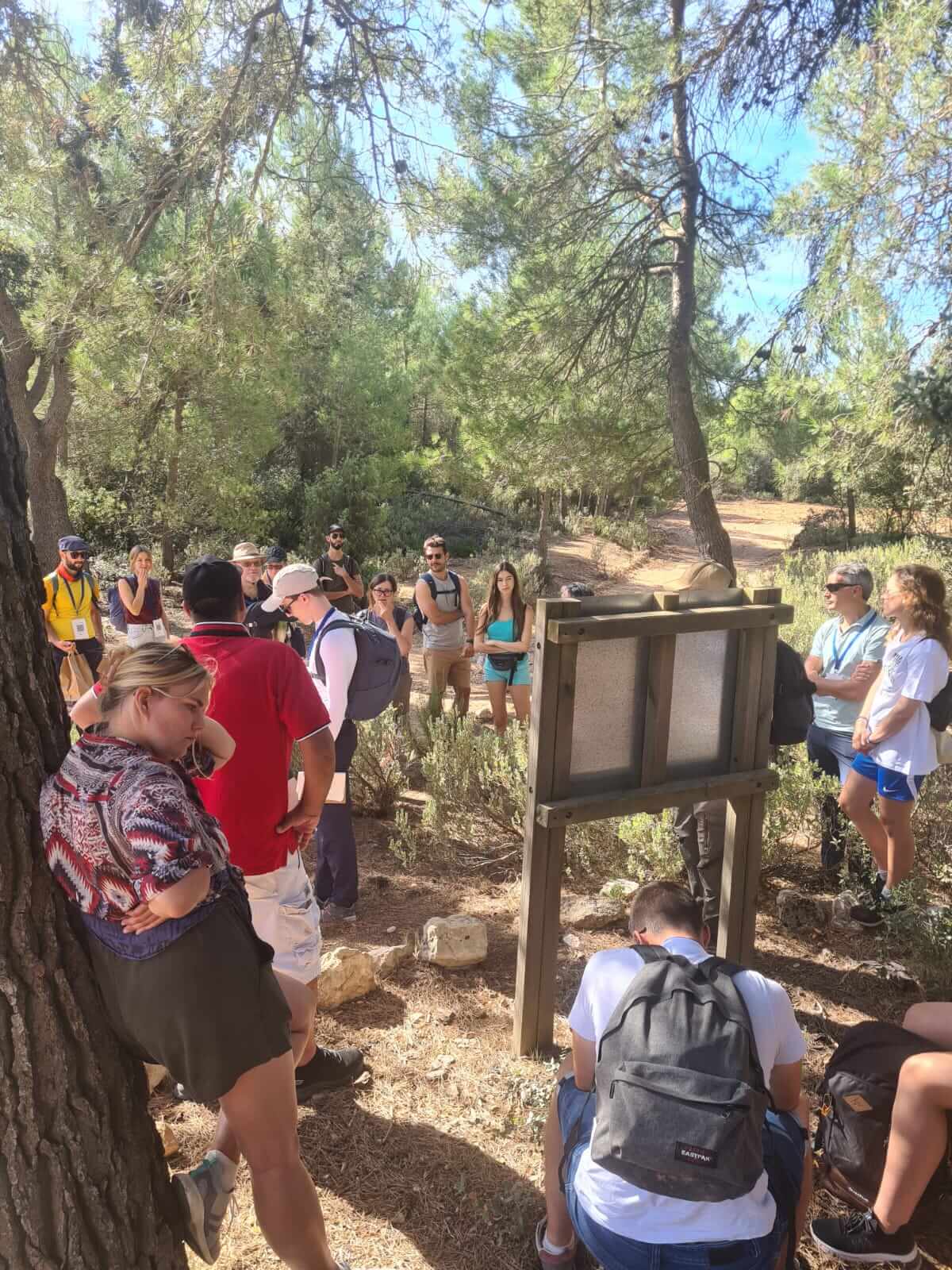This September, we had the chance to spend five glorious days in Alicante. To indulge in its September warmth and delicious tortilla de patatas, sure, but first and foremost to share state-of-the-art research, get informed about ambitious restoration projects and connect with NGOs from all over the world. The conference we attended, SERE 2022, aimed to foster efficient reciprocal exchanges between experts from different restoration sectors (forests, wetlands, rivers, agroecosystems, marine areas, urban environments, extractive industries etc.), offering a special opportunity to sit together and learn from each other. We indeed learned a lot: in this blog we share our top 10 takeaways and personal learnings from the SERE 2022 conference.
1. There is still hope in changing our systemic issues concerning both ecological and social aspects.
2. We need passionate people to build ambitious projects to tackle the global challenges we are facing – from doing fundamental research, to designing policies and facilitating environmental actions.
3. The magnitude of the challenges requires community-driven local restoration actions that are aligned with the socioeconomic needs of local (indigenous) people.
4. We are ecologists by training: our work focuses on protecting and restoring nature. Nevertheless, many speakers at the conference, including natural scientists, talked about the need for people to reconnect with nature in order to re-define our relationship to nature. This was surprising: it showed that natural scientists, too, have started to take a more holistic approach, considering societal aspects of nature restoration into how we protect and restore ecosystems.
5. While we have made tremendous progress, it became clear that we still have further need of scientific knowledge on the effectiveness of certain restoration measures and their impact. However, everybody participating in the conference was urging for taking action despite these gaps in knowledge, as the urgency of our climate and biodiversity crisis do not allow us to wait and do nothing until we find that one feasible, perfect solution. In this regard, we could navigate uncertainty by using scenario planning methods or designing solutions with local communities to adopt an integrated approach (with both scientific and social components).
6. Restoration should be less technical but adaptable to complex and ever-changing systems, for which we cannot foresee the future under climate change. We need flexible and adaptable restoration strategies. For example, focusing on bringing back one specific plant species might be redundant in a certain place, as changes in temperature and precipitation due to climate change could prevent this species from thriving in that place. One flexible approach is rewilding, as it provides room for nature to re-establish its natural processes by itself (i.e. natural disturbances, positive feedback mechanisms) while reintroducing key native species to the landscape. Letting natural processes shape ecosystems and landscapes instead of having people actively manage them can result in more sustainable restoration outcomes in the long run.
7. While the science in restoration is advancing fast, translating it into policy is not. Therefore, science needs to be more connected to practitioners. This was not only a big topic of discussion during the conference, but is one of the main goals of Crowther Lab – our team strives to design research streams that can answer meaningful questions concerning environmental policies.
8. Focusing on carbon offsetting only as a restoration goal can be dangerous. Maximising carbon storage in plantations and soils has become a major issue and planting trees has become a popular practice to offset carbon emissions. However, the most efficient and cheap strategy is to plant fast-growing monocultures, which doesn’t account for biodiversity and long-term susceptibility to wildfires. There is a huge potential to improve our tools for quantifying natural processes and better valuing nature.
9. Most restoration projects last for 3 to 5 years, and there is often no more funding to access the evolution of a site. It is essential to find ways to evaluate the success of restoration practices. There is ongoing research to develop new monitoring techniques to measure the change in biodiversity on restoration sites. One example are small recording devices, developed in collaboration with Restor that can monitor ecosystems’ biodiversity through acoustic sensing over long time periods, hence avoiding labour intensive measurements.
10. Last but not least, a personal take-away – which might be relevant for fellow young scientists and people interested in pursuing an academic career: as young professionals it was inspiring to connect to other scientists from different cultural backgrounds. It made us feel part of a community of ambitious people willing to take action. Academia can be very competitive and it would be naive to think that every scientist’s first motivation is to push knowledge further for the “greater good”. It was very refreshing and empowering to see that those participating in the SERE 2022 conference were seeking collaboration to tackle the greatest ecological challenge together by sharing their knowledge and offering support. Connecting to those people almost felt like being part of a huge supportive science-family.
These take-aways, a feeling of connectedness and a burst of motivation to keep pursuing our work as scientists is what still resonates with us from SERE 2022. Our research will be enriched by the networks we created and the interdisciplinary perspectives we gained from restoration practitioners to policy makers. This will allow us to pursue research that is even closer to society, changing the way we think about our research’s implications and how we do science that is truly relevant for practitioners in the field.
At Crowther Lab this idea is at the core of our research as we use fundamental research to find nature-based solutions to combat climate change and biodiversity loss. More specifically – and this gives us motivation and hope – our own research on estimating ecosystem resilience and potential abrupt changes between ecosystem states may be useful to evaluate the success of restoration efforts in the mid to long term using remote sensing data, or to identify vulnerable places that require special attention.






